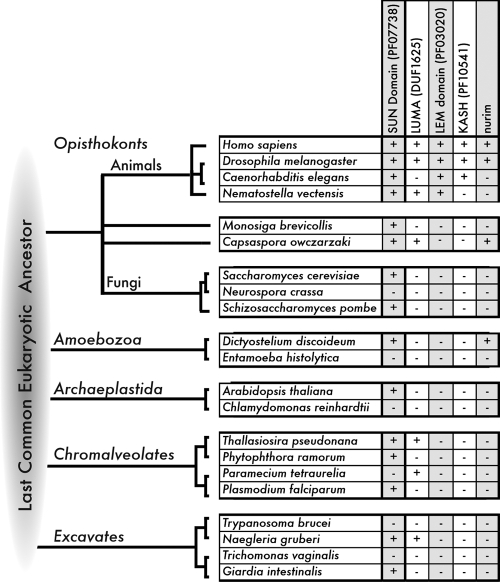Figure 3.
Identifying nuclear membrane proteins in diverse eukaryotes. Representatives of five eukaryotic supergroup lineages, queried by BLAST search for potential conservation of open reading frames (ORFs) related to Opisthokont nuclear membrane proteins. Chart indicates whether an ORF(s) homologous to each queried polypeptide was detected (+) or not detected (−) in completed genomes of representative supergroup lineages (Opisthokonts, Amoebozoa, Archaeplastida, Chromalveolates, and Excavates) in GenBank using reciprocal BLAST with e-values > 0.01, as detailed in Table I. ORFs homologous to LUMA and nurim are also present in various bacterial lineages (not depicted). The specific evolutionary relationships between each supergroup and the last eukaryotic common ancestor (LECA) are controversial, as reflected by the lack of specific branching order between these groups. However, the detection of a nuclear-associated homologue (e.g., SUN domain, or LUMA) in more than two supergroups might suggest the homologue was present in the LECA. Negative results are not definitive; for example, we did not recover the S. cerevisiae LEM (“HEH”) domain protein Src1 (see next page). The species M. brevicollis and C. owczarsaki represent the Protist lineage within Opisthokonts and are distantly related to Fungi and Animals.

